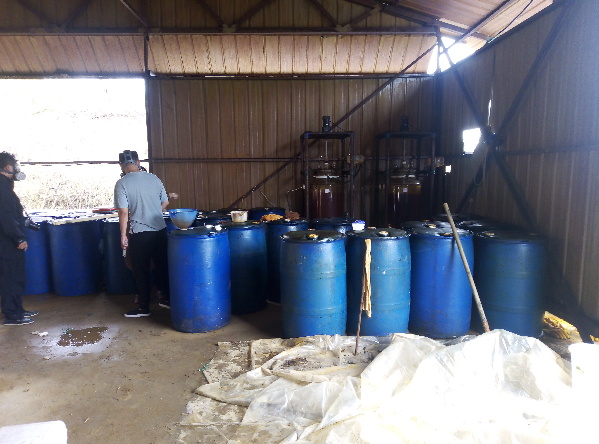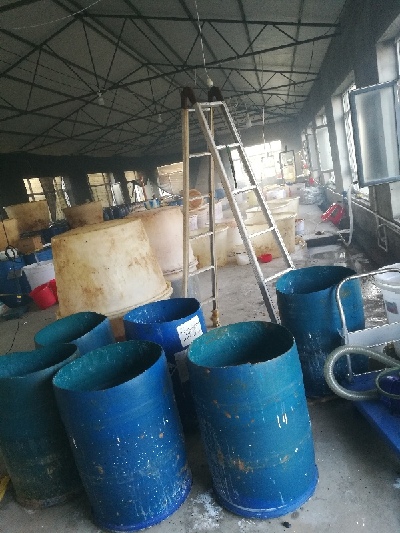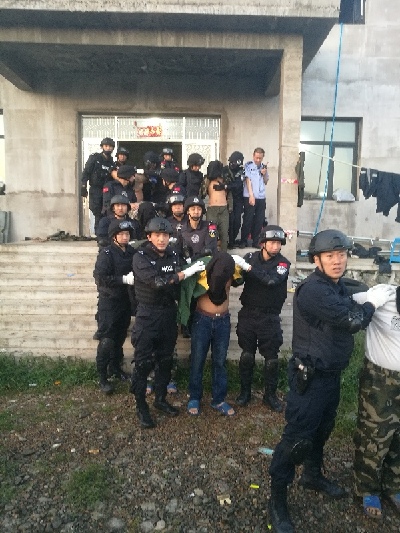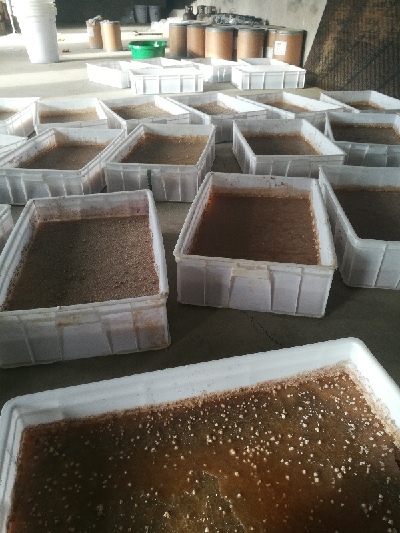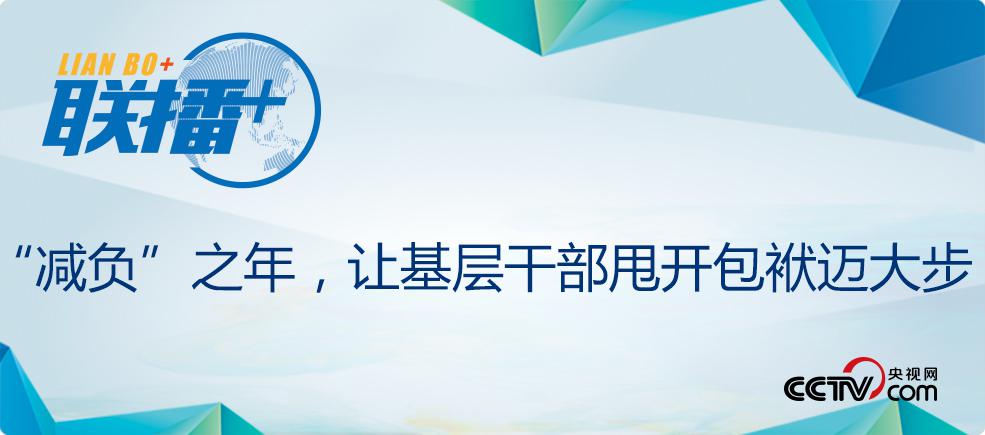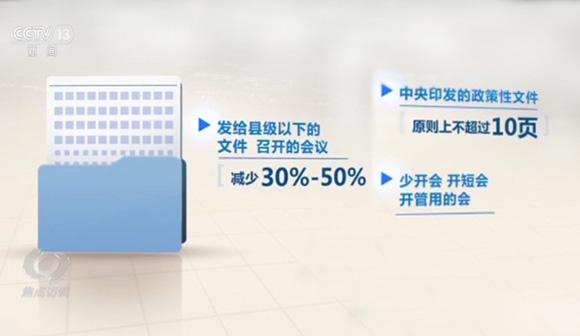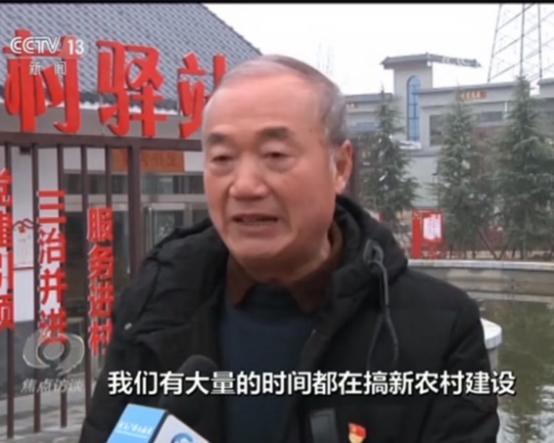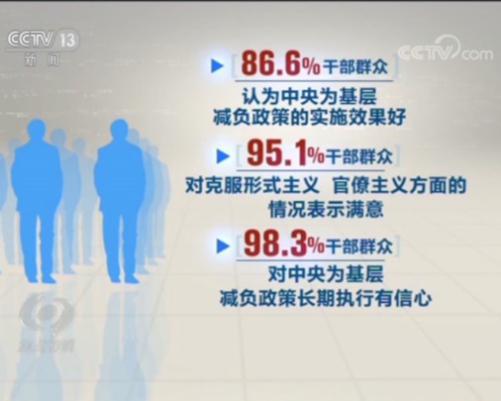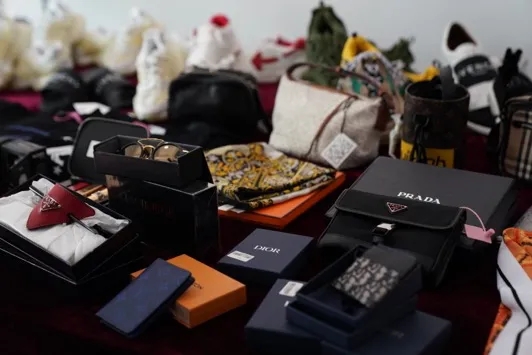Every reporter | Zhu Wanping Every editor | Liang Xiao
The project has been completed for more than two years, but tens of millions of money have not been received so far — — Zhang Ming (pseudonym), an executive of Sichuan Shida Energy Development Co., Ltd. (hereinafter referred to as Sichuan Shida), an oil and gas construction engineering enterprise, is quite helpless. From last year to now, Sichuan Shida has defended its rights through legal means, and both trials have won, but the other party has not paid and has been reluctant to communicate positively.
The project payment owed to Sichuan Shida is Huasheng Huifeng Gas Transmission and Distribution Co., Ltd. (hereinafter referred to as Huasheng Huifeng), the holding grandson company of listed company Tianhao Environment (SZ, 300332), and the project in dispute between the two parties is Zhonglian Coal Shenmu — Anping coalbed methane pipeline project (hereinafter referred to as Shen ‘an line). After the project is completed, it will provide gas source guarantee for winter peak shaving in five provinces and cities in North China.
In recent years, Tianhao environment has focused on gas business, and it has also made a "heavy note" on the Shen’ an line project — — Listed companies have set up joint ventures with China United Coal Company, a subsidiary of CNOOC, to jointly build and operate Shen ‘an Line, and the first phase of Shen ‘an Line (namely Shanxi — The total investment of Hebei section, the same below) exceeds 4 billion yuan. However, the reporter noted that the Shen ‘an line project was not approved by the National Development and Reform Commission until June this year, but some line projects were completed and ventilated as early as 2017, or there were cases of "unapproved construction".
"Money hasn’t been given, which has dragged us badly. Without money, we can’t do many things. " Zhang Ming pointed out that Huasheng HSBC was "Lao Lai". According to the second-instance judgment of Shanxi Higher People’s Court in July 2019, Huasheng HSBC has to pay 49.9 million yuan for Sichuan Shida Project and the corresponding interest.
What makes Zhang Ming even more angry is that in the past two years, Huasheng HSBC has been reluctant to communicate positively. "Now don’t even answer the phone. Not only the above (leaders) don’t answer the phone, but even the people below don’t answer the phone. "
The national business daily reporter noted that the dispute between the two sides was caused by the project contracting three years ago. In October 2016, Sichuan Shida and Huasheng HSBC signed "Shenmu — The general contract of the third and seventh tender sections of Anping coalbed methane pipeline project (Xingxian to Qicun section of Xinfu District, Shanxi Province) has a total contract price of 70 million yuan and 171 million yuan respectively, totaling about 240 million yuan.
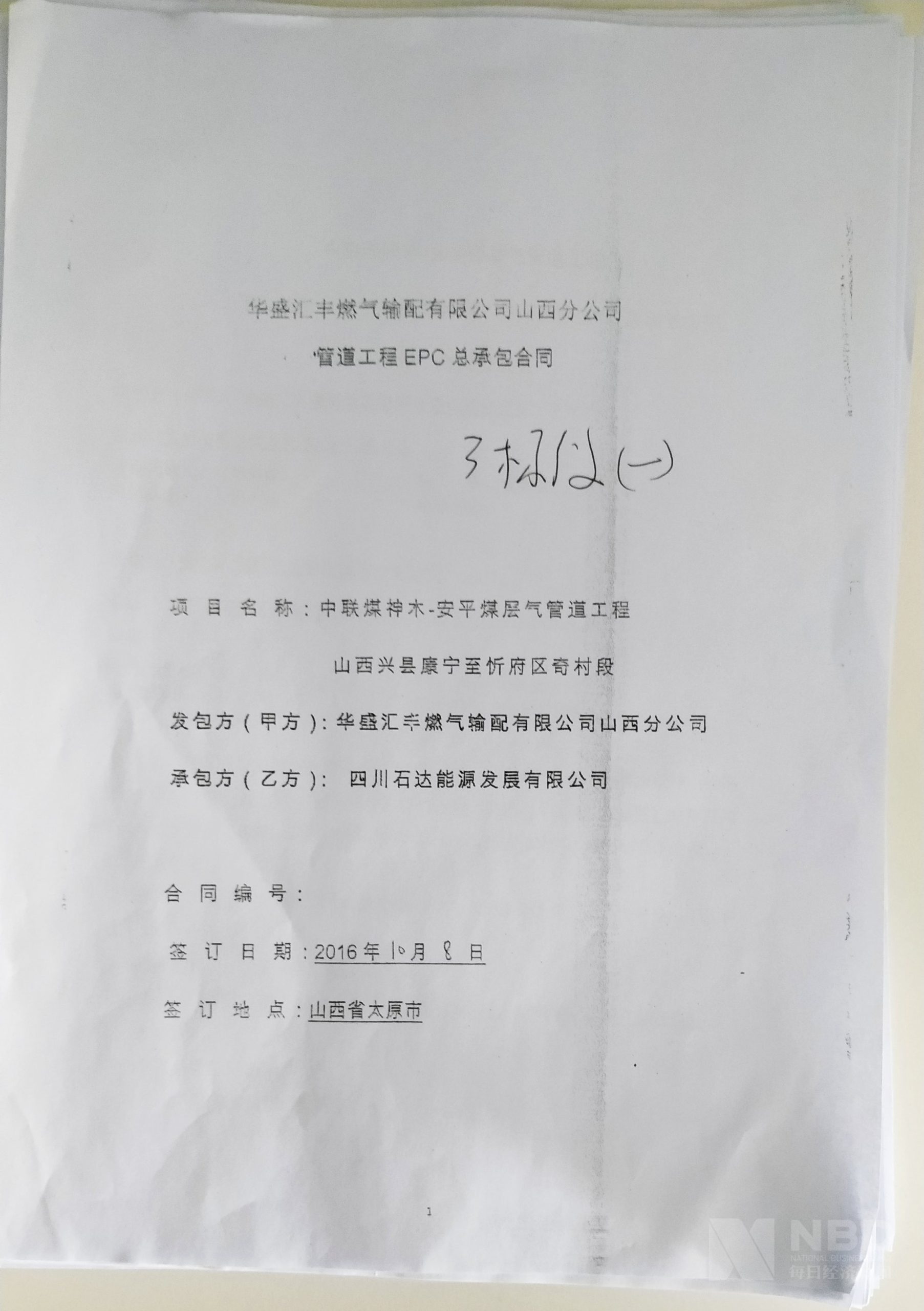
Photo of the project contract provided by Sichuan Shida Source: Photo by reporter Zhu Wanping
Zhang Ming is very familiar with the whole project. He said: "After the contract was signed, we have been entering the construction site as agreed." In September 2017, two engineering tenders contracted by Sichuan Shida were completed and delivered. However, in 2017, Huasheng HSBC was in arrears in payment. "Every time we ask for it, they pay us millions like toothpaste. The absolute amount of project money owed to us is also growing. " Zhang Ming said.
After the delivery of the project, there were no results in asking for money many times. In October 2018, Sichuan Shida sued Huasheng HSBC and asked Huasheng HSBC to pay the remaining 80 million yuan of project funds and interest.
In the trial of two courts, Sichuan Shida won the case. In February 2019, Taiyuan Intermediate People’s Court ruled that Huasheng HSBC paid about 40 million yuan for the project and the corresponding interest. In this regard, both parties appealed until the judgment of the second instance.
Zhang Ming said that after the Shanxi Higher People’s Court made a judgment, Tianzhu’s environment has never paid the money, and there is no saying. "Now, there is basically no communication between us."
Tianhao Environment has also disclosed this lawsuit. In the semi-annual report of 2019 released at the end of August this year, the listed company stated that "Sichuan Shida sued Huasheng HSBC and Huasheng HSBC Shanxi Branch for contract disputes" and "the case is in the undecided stage of the second trial". The Shanxi Higher People’s Court made a second-instance judgment at the end of July, but Tianzhu Environment still called it "undecided" at the end of August, and no corresponding progress has been disclosed so far.
"We need to verify the situation, which may not meet the standard of separate disclosure." Recently, the reporter consulted as an investor, and an environmentalist in Tianzhu responded.
"As far as I know, (Huasheng HSBC) did not pay the judgment because of the problem of triangular debt." Xiao Shuangtian, general manager of Tianhao Environment, told national business daily that Sichuan Shida owed Shanxi Huifeng Xingye Gas Group Co., Ltd. (hereinafter referred to as HSBC Xingye) more than 50 million yuan, while HSBC Xingye owed more than 30 million yuan to Tianhao Environment, and Tianhao Environment was sentenced to pay Sichuan Shida more than 50 million yuan (including interest). "Isn’t this a triangular debt? Originally, we were going to sue HSBC Societe Generale, but HSBC Societe Generale proposed that the three parties could offset each other first. " Xiao Shuangtian said.
"There is indeed a problem of triangular debt, and we also agree to offset it." On December 19, another senior executive of Sichuan Shida said that it was only in November this year that it was deducted under the coordinated implementation of the court. He also said that the deduction was not proposed by Huasheng HSBC, but the company found that several parties had debts with each other before finding the court and then implementing the deduction.
However, the executive said that up to now, after the debts of all parties were offset, Huasheng HSBC still owed Sichuan Shida more than 20 million yuan, and the amount owed by the other party was still not small.
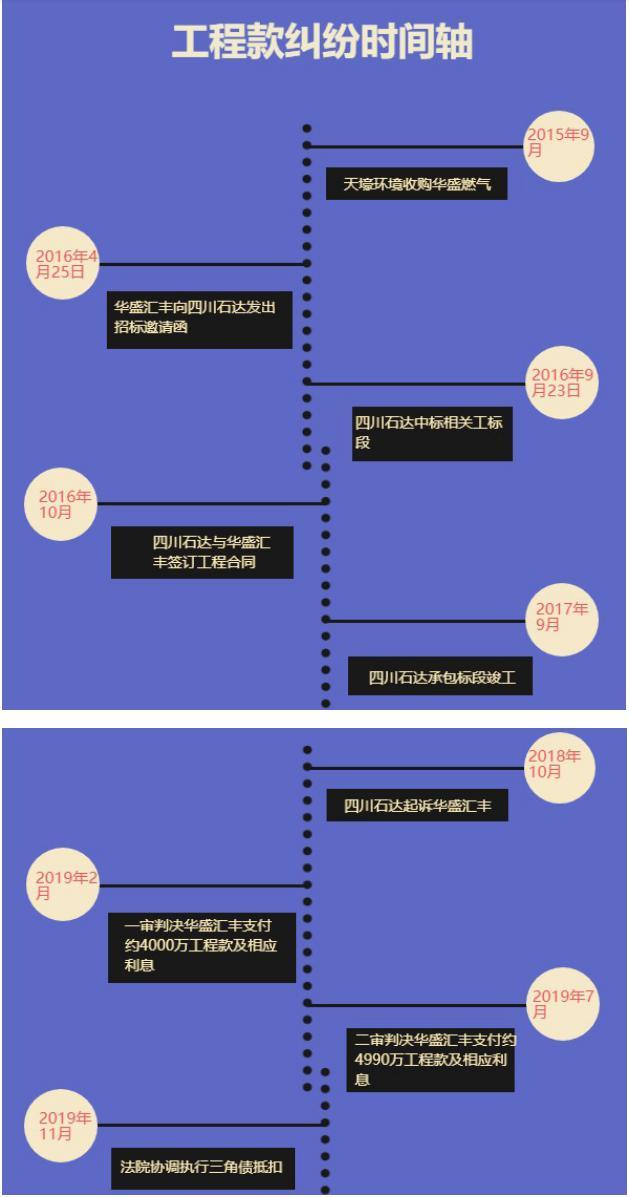
Time axis of project payment dispute between Sichuan Shida and Huasheng HSBC
"I still owe some money after the offset." Wen Leijun, general manager of Huasheng Gas Co., Ltd. (hereinafter referred to as Huasheng Gas) told reporters. Huasheng Gas holds 51% equity of Huasheng HSBC and is the largest shareholder of Huasheng HSBC. Wen Leijun said that at present, the triangular debt offset has just been completed and is being settled through negotiation.
The reporter noted that in addition to Sichuan Shida, Huasheng HSBC also owed debts to other construction units (Shen ‘an Line). In April this year, Huasheng HSBC was applied for property preservation by Sinopec Shengli Oil Construction Engineering Co., Ltd. (hereinafter referred to as Shengli Oil Construction) due to a contract dispute. Later, the two sides reached a settlement. Tianzhu Environment also disclosed in the semi-annual report that listed companies should pay about 47.88 million yuan to Shengli Youjian Shanxi Branch.
The dispute between Sichuan Shida and Huasheng HSBC is caused by Shen ‘an Line, and Tianhao Environment attaches great importance to this project, and listed companies have invested a lot of resources in this pipeline.
The entire Shen’ an line spans Shaanxi, Shanxi and Hebei provinces, with a total length of about 600 kilometers, starting from Shenmu City in Shaanxi Province in the west and Anping County in Hebei Province in the east, with an annual designed gas transmission capacity of about 5 billion cubic meters. The Shen’ an line is intended to connect the coalbed methane resources in the eastern edge of Ordos Basin with the gas market in Beijing, Tianjin and Hebei, and transport natural gas dominated by coalbed methane.
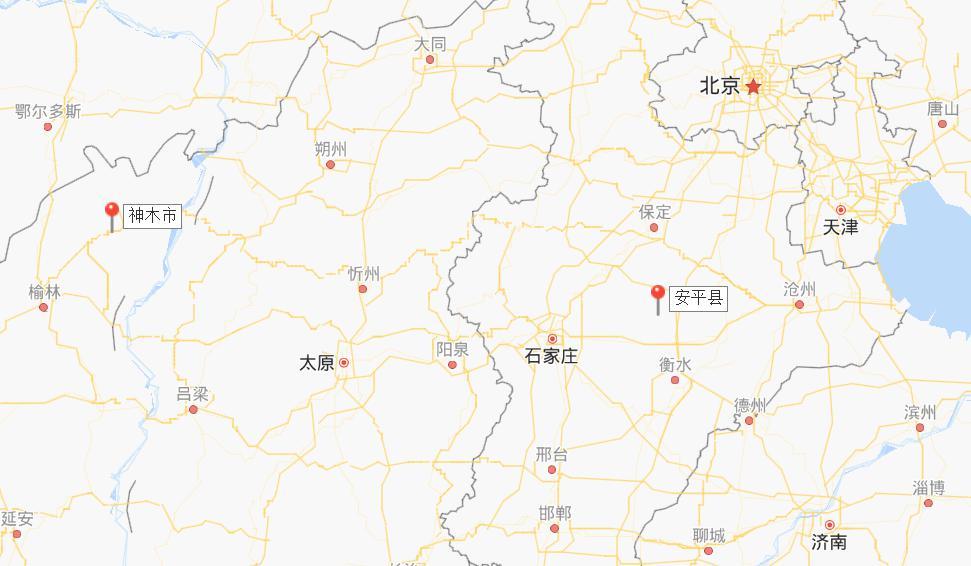
Shen’ an line starts from Shenmu in the west and ends in Anping in the east, crossing Shaanxi, Shanxi and Hebei provinces. Image source: Baidu map screenshot.
In fact, in recent years, the Tianzhu environment, which focuses on the layout of gas field, has "re-injected" the project. In September 2015, Tianzhu Environment spent 50 million yuan to acquire the entire equity of Huasheng Gas, a cross-border gas field. Up to now, natural gas supply and pipeline transportation business has accounted for half of the revenue of listed companies. The announcement information shows that the Shen’ an line pipeline project (Shanxi — Hebei section) The total investment is as high as 4.142 billion yuan. Once the Shen’ an line is completed, Tianhao environment can not only collect pipeline transportation fees, but also the company’s own gas business can earn profits through the price difference of natural gas.
Xiao Shuangtian once said that the construction and operation of Shen ‘an Line means far more than 8% of the pipeline transportation cost to Tianzhu environment. Tianhao environment will also carry out peripheral operations around pipelines and gradually realize the closed loop of natural gas industry chain.
Some insiders pointed out: "Energy transmission trunk lines such as Shen ‘an Line are generally obtained by large state-owned energy giants such as PetroChina and Sinopec." Then, how did Tianzhu environment get the "toon" of Shen ‘an Line Project?
"This matter was proposed by China United Coal to cooperate with us," Xiao Shuangtian told the reporter of national business daily. After the Shen ‘an Line was planned, "China United Coal proposed to cooperate with us."
The reporter noted that on November 8 last year, Huasheng Gas, the parent company of Huasheng HSBC, and China United Coalbed Methane Co., Ltd. (hereinafter referred to as China United Coal), a subsidiary of CNOOC, signed the Joint Venture Contract for the Establishment and Operation of China Lianhuarui Gas Co., Ltd. to jointly establish a pipeline joint venture company, China Lianhuarui, to build and operate the Shen ‘an Line project. Zhonglian Huarui is 51% owned by Zhonglian Coal and 49% by Huasheng Gas. Huasheng Gas said in official website News that this means the pipeline construction of Shen’ an Line.Enter the formal implementation stage.”。
Tianhao Environment has disclosed that the company timely injected some completed gas pipeline assets of Huasheng Gas into Zhonglianhuarui, and the assets it refers to include the Shen ‘an Line Bid Project undertaken by Sichuan Shida and others.
In June this year, the National Development and Reform Commission officially approved the Shen ‘an Line project, and the project unit was Zhonglian Coal. At that time, Tianhao Environment once said: "The first phase of Shen ‘an Line approved by the National Development and Reform Commission, that is, from Lvliang, Shanxi to Anping, Hebei, has a total length of 543.87 kilometers". However, the reporter found that the "official implementation" of the Shen ‘an Line project, which was granted the "birth certificate" in June this year, may be much earlier than the time approved by the National Development and Reform Commission, and some lines of the project undertaken by Tianzhu Environment may have the problem of "unapproved construction first".
National business daily reporter noted that at the end of 2016, Shen ‘an Line was included in the 13th Five-Year Plan for the Development and Utilization of Coalbed Methane (Coal Mine Gas) published by the National Energy Administration. In September 2017, the Shen ‘an Line Project obtained the national unified investment project code. The time when Huasheng HSBC started the external bidding was even earlier than the time when Shen ‘an Line was included in the relevant planning.
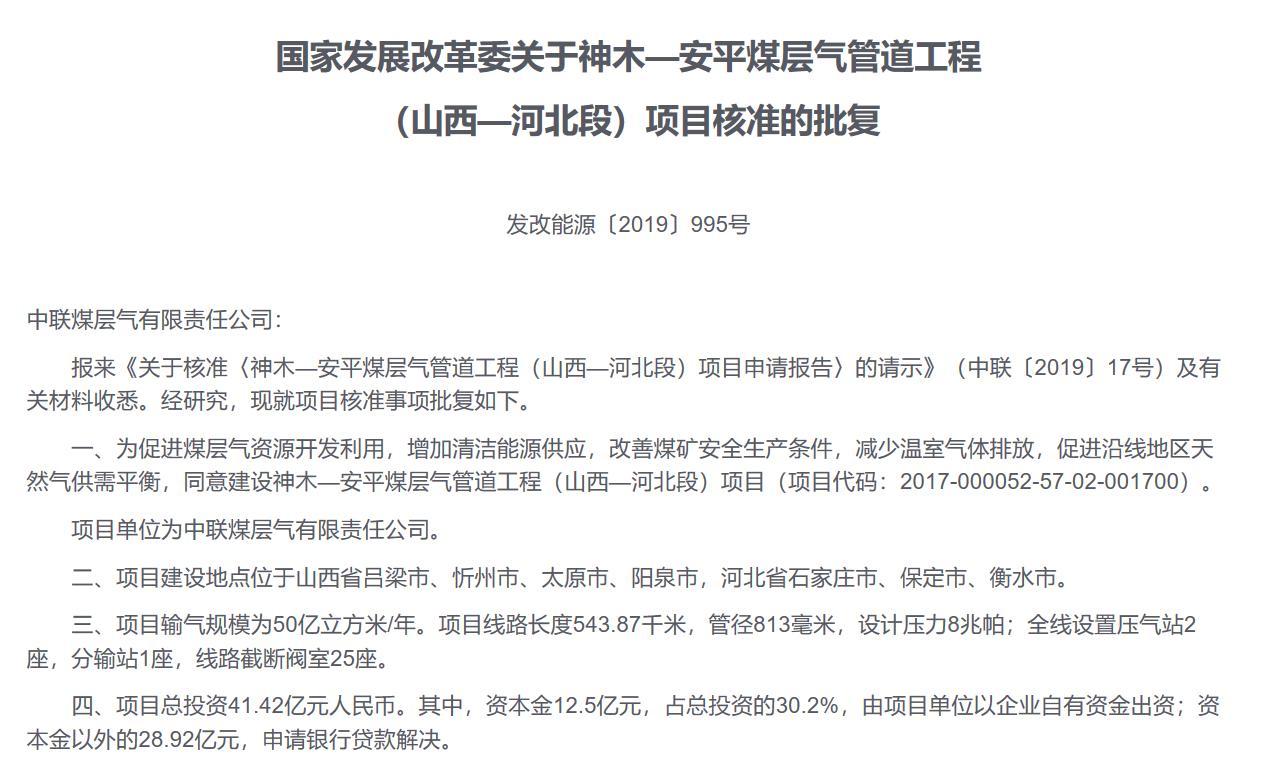
The approval of the project issued by the National Development and Reform Commission in June 2019
Image source: Screenshot of official website webpage of National Development and Reform Commission.

Examination and approval of various departments of Shen’ an line project
Image source: Screenshot of the National Online Approval and Supervision Platform for Investment Projects.
On April 25th, 2016, Huasheng HSBC sent a tender invitation letter to Sichuan Shida, and the tender project was named "CNOOC Unconventional Natural Gas gas transmission pipeline project — Caojiapo in Xing County, Shanxi Province to Qicun Section in Xinfu District ". There is such a text in the invitation to bid: "Project … … It was commissioned by CNOOC to build and manage Huasheng HSBC. " After Sichuan Shida won the bid, the name of the contracted project appeared "Zhonglian Coal". It was not until November 2016 that Zhonglian Coal submitted the Shen ‘an Line project to the National Development and Reform Commission for approval. In other words, Huasheng HSBC started bidding for the project before it was submitted to the National Development and Reform Commission for approval.
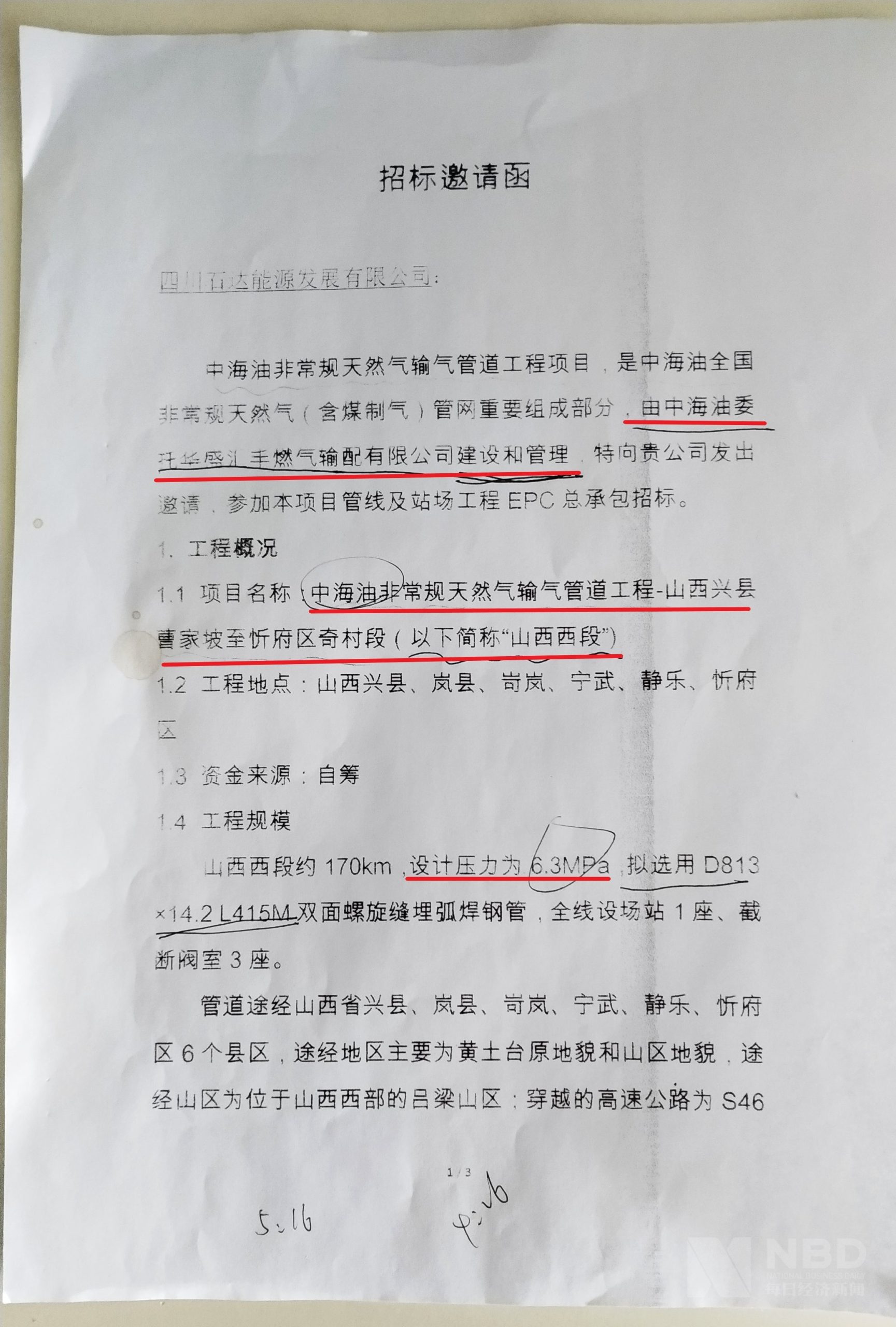
Invitation letter for bidding provided by Sichuan Shida Image source: Photo by reporter Zhu Wanping
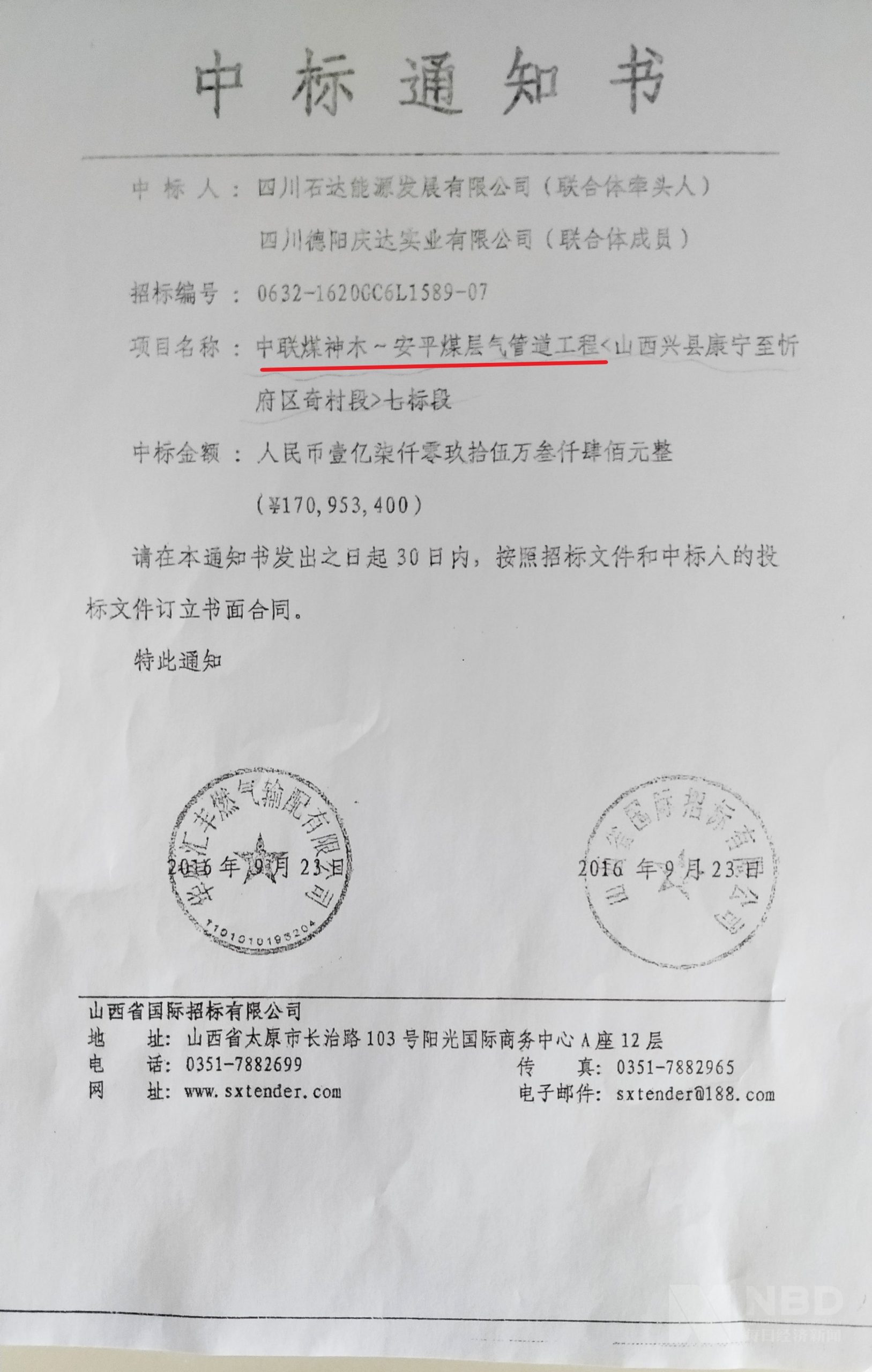
The letter of acceptance provided by Sichuan Shida Image source: Photo by reporter Zhu Wanping
Regarding the question of whether the Shen ‘an Line project has not been approved for construction first, Chen Zuotao, chairman of Tianzhu Environment, told the reporter of national business daily: "I don’t know much about this matter if I want to ask Mr. Xiao (referring to Xiao Shuangtian)." Xiao Shuangtian denied it: "Our procedures are complete."
On December 20th, the reporter once again inquired about Tianzhu Environment as an investor. "Shenan Line (Shanxi — Hebei section) has a total length of more than 540 kilometers. After the completed pipeline of more than 200 kilometers is injected into China Lianhua Rui, it is also part of the Shen’ an line. " A person from Tianzhu Environment said.
"Shenan Line (Shanxi — The pipeline in Hebei section is divided into two parts, one is 200 kilometers built in the early stage, and the other is the pipeline to be built soon. " Tianzhu environment The person said,The 200-kilometer pipeline has been built mainly in the name of connecting lines."The procedures are all complete". The preparatory work for the new part has been completed and has not yet started. It is expected that the Shen’ an Line (Shanxi — Hebei section) will be completed in June 2020.
In fact, in the actual construction, the environmental aspect of Tianhao has only been approved by the local government. At the end of December 2016, the Development and Reform Commission of Xinzhou City, Shanxi Province issued the "Reply on the Approval of the Second Gas Source Connecting Line Project in Yuanping City" and approved some sections of the project. In other words, part of the first phase of the project is based on the project approval procedures issued by the local government. After the completion of the 200-kilometer pipeline, the first-phase project of Shen’ an Line as a whole was officially approved by the National Development and Reform Commission.
"On the surface, it is the gas project in Xinzhou and Lvliang, but it is actually the Shen’ an line." Zhang Ming said that the diameter of the gas pipeline approved by Xinzhou is D500mm and the design pressure is 4MPa, while Huasheng HSBC changed the diameter to D813mm and the design pressure is 8MPa during construction. The changed diameter and design pressure are completely consistent with the requirements of the National Development and Reform Commission for the Shen ‘an Line project.
In addition, the reporter noted that the National Development and Reform Commission requested in the approval document that "the project environmental impact assessment document shall not be started without examination and approval". However, it was not until October this year that the EIA report of the first phase of Shen ‘an Line was compiled by the relevant companies. "The EIA report was completed about a month ago, and they (Zhonglian Coal) should still be in the process now." A person who participated in the EIA of Shen’ an Line revealed.
The reporter of national business daily also sent an interview letter to Tianhao Environment about the arrears of the Sichuan Shida project payment and whether the Shen ‘an line project was suspected of "being built without approval", but there was no response. From December 19 to 20, the reporter also called a senior executive of Zhonglian Coal many times and sent the interview questions to his mobile phone in the form of text messages, but there was no response.
Cover image source: Photo Network
